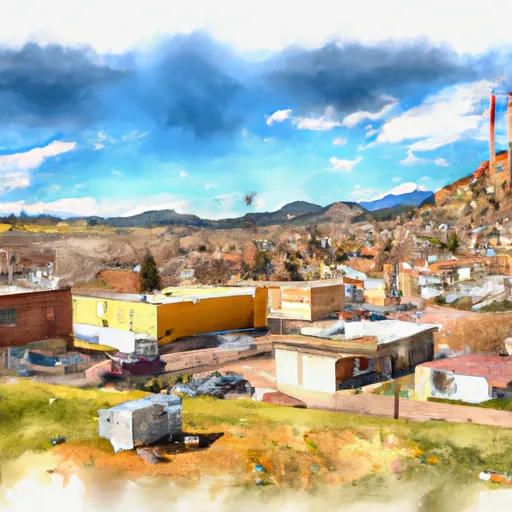-
 Snoflo Premium
Snoflo Premium
Get unlimited access to all our content
With no Ad interruptions! - Start Your Free Trial Login with existing account
Dumont
Eden Index
Climate
6.7
•
Recreation
6.9
•
Community
•
Safeguard
5.1/10

Dumont, Colorado is a small town located in Clear Creek County. The climate in Dumont is typical of the Rocky Mountain region, with cold winters and cool summers. The town is situated near Clear Creek, which includes several hydrology constituents, such as the Clear Creek Reservoir and the Mount Evans Wilderness Area. Fortunately, these water sources allow for a variety of outdoor recreation opportunities, such as fishing, kayaking, and hiking. Additionally, Dumont is within close proximity to popular ski resorts such as Loveland Ski Area and Winter Park Resort, making it a popular destination for winter sports enthusiasts.
What is the Eden Index?
The Snoflo Eden Index serves as a comprehensive rating system for regions, evaluating their desirability through a holistic assessment of climate health, outdoor recreation opportunities, and natural disaster risk, acknowledging the profound impact of these factors on livability and well-being.
Climate Health Indicator (CHI): 6.7
Dumont receives approximately
486mm of rain per year,
with humidity levels near 50%
and air temperatures averaging around
5°C.
Dumont has a plant hardyness factor of
5, meaning
plants and agriculture in this region thrive during a short period during spring and early summer. Most
plants will die off during the colder winter months.
By considering the ideal temperature range, reliable water supplies, clean air, and stable seasonal rain or snowpacks, the Climate Health Indicator (CHI) underscores the significance of a healthy climate as the foundation for quality living.
A healthy climate is paramount for ensuring a high quality of life and livability in a region, fostering both physical well-being and environmental harmony. This can be characterized by ideal temperatures, reliable access to water supplies, clean air, and consistent seasonal rain or snowpacks.
Weather Forecast
Streamflow Conditions
South Platte
Area Rivers
South Platte
Snowpack Depths
South Platte
Reservoir Storage Capacity
South Platte
Groundwater Levels
Recreational Opportunity Index (ROI): 6.9
The Recreational Opportunity Index (ROI) recognizes the value of outdoor recreational options, such as parks, hiking trails, camping sites, and fishing spots, while acknowledging that climate plays a pivotal role in ensuring the comfort and consistency of these experiences.
Access to outdoor recreational opportunities, encompassing activities such as parks, hiking, camping, and fishing, is crucial for overall well-being, and the climate plays a pivotal role in enabling and enhancing these experiences, ensuring that individuals can engage in nature-based activities comfortably and consistently.
Camping Areas
| Campground | Campsites | Reservations | Toilets | Showers | Elevation |
|---|---|---|---|---|---|
| Deer Creek | 13 | 9,092 ft | |||
| Round Mountain | 15 | 8,531 ft | |||
| Lost Park | 12 | 9,958 ft | |||
| Twin Eagles | 9 | 8,547 ft | |||
| Handcart | 10 | 9,818 ft | |||
| Meridian | 18 | 9,013 ft | |||
| Hall Valley | 9 | 9,842 ft | |||
| Burning Bear | 13 | 9,643 ft | |||
| Kenosha Pass | 25 | 10,052 ft | |||
| Spruce Grove - Lake George | 27 | 8,510 ft |
Nearby Ski Areas
Catastrophe Safeguard Index (CSI):
The Catastrophe Safeguard Index (CSI) recognizes that natural disaster risk, encompassing floods, fires, hurricanes, and tornadoes, can drastically affect safety and the overall appeal of an area.
The level of natural disaster risk in a region significantly affects safety and the overall livability, with climate change amplifying these risks by potentially increasing the frequency and intensity of events like floods, fires, hurricanes, and tornadoes, thereby posing substantial challenges to community resilience and well-being.
Community Resilience Indicator (CRI):
The Community Resilience Indicator (CRI) recognizes that education, healthcare, and socioeconomics are crucial to the well-being of a region. The CRI acknowledges the profound impact of these elements on residents' overall quality of life. By evaluating educational resources, healthcare accessibility, and economic inclusivity, the index captures the essential aspects that contribute to a thriving community, fostering resident satisfaction, equity, and social cohesion.

